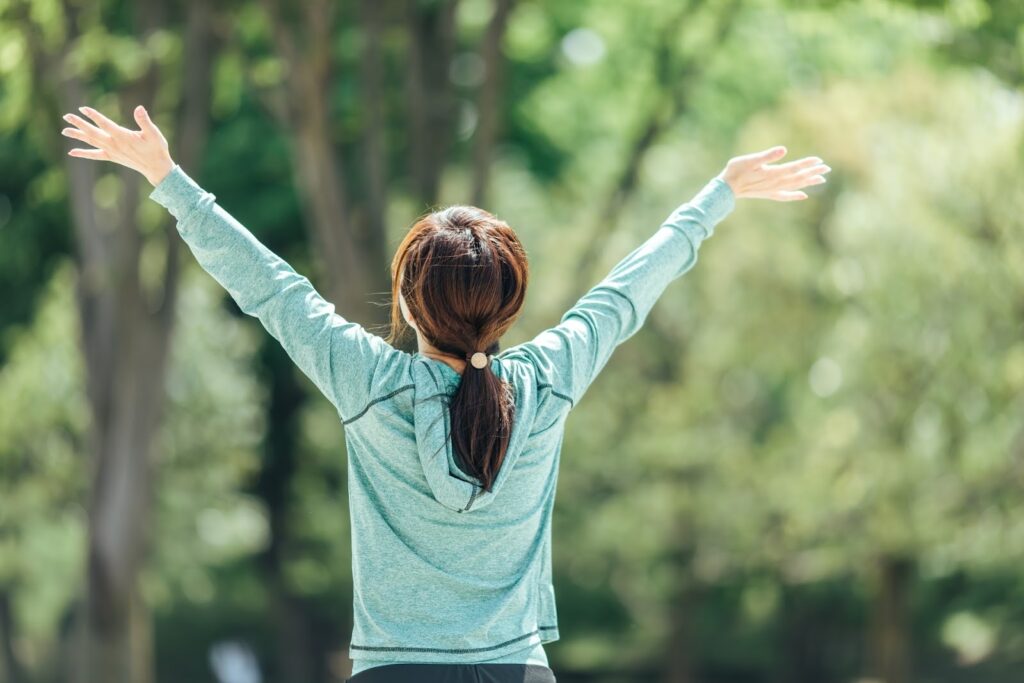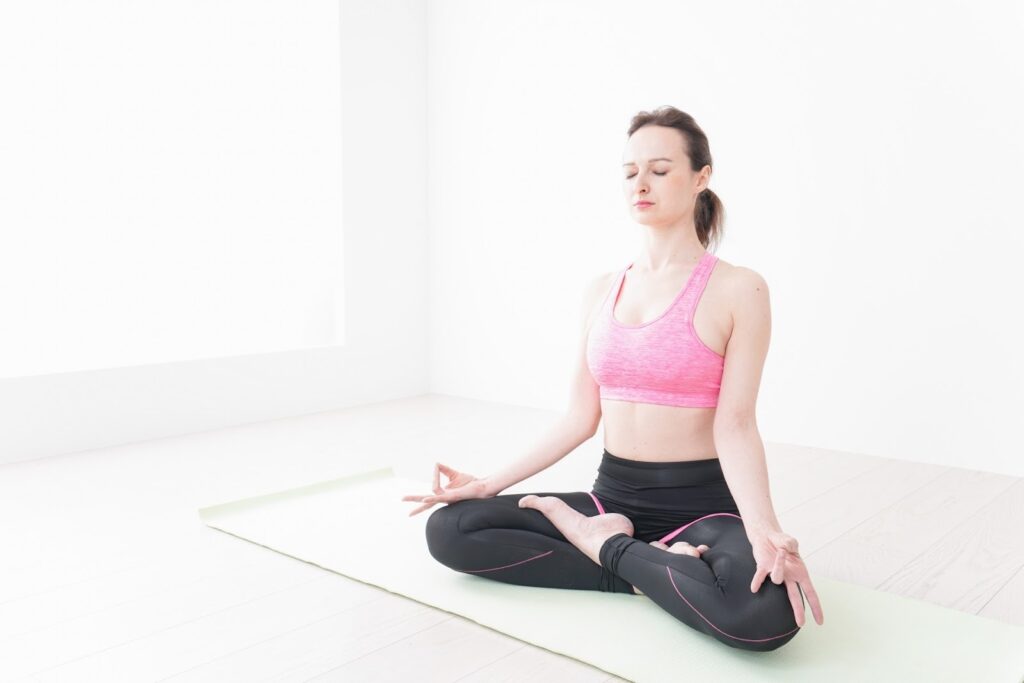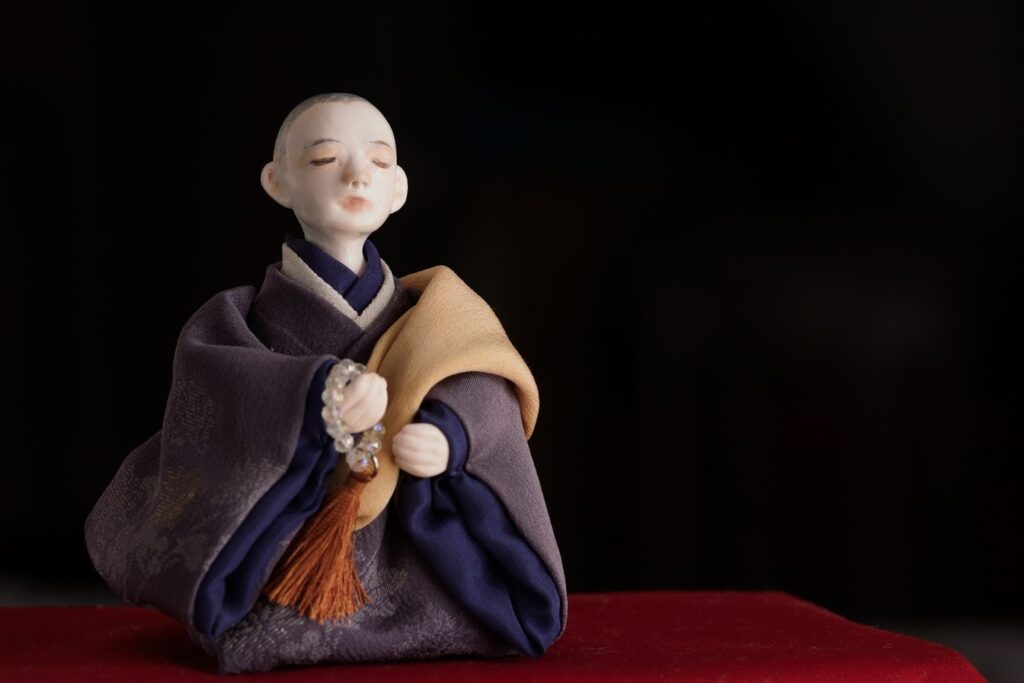Breathing Techniques for Anxiety: Science and Susoku-kan

Quick Summary
Anxiety often disrupts natural breathing, making it shallow and rapid. Practicing breathing techniques for anxiety helps calm the nervous system, slow the heart rate, and restore balance. Among these methods, Susoku-kan (counting breaths) offers a simple yet powerful way to anchor the mind in the present and integrate mindful breathing into everyday life. With guidance from the Gassho app, anyone can begin this centuries-old practice in modern settings.
- Breathing matters: Anxiety speeds up breathing and fuels stress
- Science-backed: Slower breathing lowers cortisol and eases anxiety symptoms
- Susoku-kan focus: A simple practice of counting breaths, adaptable to daily life
- Everyday use: One minute during commutes, breaks, or before sleep is enough
- Accessible tool: The Gassho app offers guided Susoku-kan sessions
Introduction
When anxiety strikes, the body reacts before the mind can catch up. The heart races, thoughts spiral, and breathing becomes shallow. In those moments, the simplest anchor is often overlooked: the breath itself.
Many people search for breathing techniques for anxiety, from structured practices like 4-7-8 breathing to gentle abdominal breathing. Yet one traditional method has stood the test of time: Susoku-kan, or counted breathing. Rooted in Buddhist meditation and now accessible through the Gassho app, Susoku-kan demonstrates how focusing on something as natural as inhaling and exhaling can bring the mind back to the present.
This article explores why breathing matters for anxiety relief, introduces different techniques, and highlights Susoku-kan as an easy practice anyone can start today.
The Science and Mechanism Behind Breathing Techniques for Anxiety

Anxiety does not only live in the mind—it shows up in the body, and breathing is often the clearest signal. When worry takes over, breathing becomes shallow and rapid, sending a message to the brain and body that danger is near. Stress hormones rise, the heart races, and the cycle of anxiety tightens.
Research shows that during anxious states, breathing rates often rise to 16–20 breaths per minute, compared to a calmer rhythm of 8–12 breaths per minute in relaxed conditions. Faster breathing reduces oxygen efficiency, increases heart rate, and amplifies the feeling of being overwhelmed.
Slowing the breath interrupts this cycle. Inhaling through the nose and exhaling slowly through the mouth activates the parasympathetic nervous system—the body’s “rest and digest” mode. This shift lowers heart rate and blood pressure, allowing both mind and body to regain balance.
Scientific evidence strongly supports this. Harvard Health reports that a structured mindfulness-based stress reduction (MBSR) program—which includes breath awareness among other practices—was found to reduce anxiety symptoms as effectively as medication in a clinical trial. The Mayo Clinic highlights breathing exercises as a practical daily strategy for stress management, noting improvements in focus and emotional regulation. The American Psychological Association (APA) also points to mindful breathing as an evidence-based method for alleviating anxiety disorders.
In short, breathing techniques for anxiety are not just “feel-good” practices. They work on measurable physiological levels—breathing rate, hormones, and nervous system balance—and are backed by decades of research. Whether through structured practices like 4-7-8 breathing or traditional approaches such as Susoku-kan, the scientific conclusion is clear: slowing the breath changes the mind.
Different Breathing Techniques for Anxiety

There is no single way to breathe when anxiety strikes. Over the years, psychologists, doctors, and meditation teachers have introduced different techniques that share one goal: to slow the breath and steady the mind. Here are some of the most widely used methods:
Diaphragmatic breathing (belly breathing):
This technique involves placing a hand on the stomach and inhaling deeply so that the diaphragm expands. Exhaling slowly helps reduce muscle tension and signals safety to the nervous system. It is one of the most studied breathing techniques for anxiety and has been shown to reduce stress hormones in just a few minutes of practice.
4-7-8 breathing:
Popularized by Dr. Andrew Weil, this pattern involves inhaling for 4 counts, holding for 7, and exhaling for 8. The extended exhale creates a natural calming effect. Many people use it before sleep or during sudden waves of anxiety. However, beginners may find the long breath-hold uncomfortable at first, so gentle practice is recommended.
Box breathing (4-4-4-4 method):
Favored by athletes and military training programs, box breathing consists of inhaling for 4 counts, holding for 4, exhaling for 4, and holding again for 4. The balanced rhythm helps improve focus and regulate stress. While structured, it may feel rigid for some, making it better suited to moments that require concentration under pressure.
Resonance breathing (around 6 breaths per minute):
Also known as coherent breathing, this method emphasizes breathing at a slow and steady pace of about 5 to 6 breaths per minute. Studies suggest it synchronizes heart rate variability with the breath, leading to improved emotional regulation and reduced anxiety symptoms.
Among these approaches, a traditional practice called Susoku-kan deserves attention. Unlike other techniques that rely on specific counts or patterns, Susoku-kan simply involves counting each inhalation and exhalation. Rooted in Buddhist meditation, it combines the physical benefits of slowed breathing with the mental anchor of mindfulness. By drawing awareness back to “this breath, right now,” Susoku-kan prevents the mind from spiraling into the past or future—where anxiety often thrives.
Today, Susoku-kan is still taught in temples and meditation centers, but it has also been adapted for daily life through digital tools such as the Gassho app, making this centuries-old practice accessible to anyone with a few spare minutes.
How to Practice Susoku-kan in Daily Life

Unlike many structured breathing techniques for anxiety, Susoku-kan is simple, timeless, and highly adaptable. The word means “counting breaths,” and the practice has been part of Buddhist meditation for centuries. Its power lies in its clarity: no strict timing, visualization, or posture is required—only attention to the breath and a gentle count.
Step-by-step guide:
- Sit comfortably with your spine upright.
- Inhale slowly through your nose, noticing the air entering your body.
- Exhale gently through your mouth, releasing tension in your shoulders.
- At the end of the first exhale, count “one”; at the next, “two,” continuing up to ten.
- If your mind wanders, return to “one” without judgment and begin again.
This cycle anchors the mind in the present moment. By focusing on the breath and the count, distractions loosen their grip. Many practitioners notice that anxiety softens within minutes because the mind is no longer pulled into worries about the future or regrets about the past.
Practical tips for daily life:
- Try a one-minute Susoku-kan session while waiting at a red light.
- Use short breathing breaks between emails or meetings.
- Invite a child or partner to practice together before stressful events.
- Before bed, spend five minutes slowing your breath to prepare for sleep.
The beauty of Susoku-kan is that it requires no special time or equipment.In a Susoku-kan video on the Gassho app, Kuri Kōchō of Kongo Sanmai-in, Koyasan, says: “Even a few minutes during a commercial break or while waiting at a red light are enough.” This perspective makes the practice sustainable—something you can weave into the cracks of daily life.
For those who prefer guidance, the Gassho app offers beginner-friendly Susoku-kan sessions. A gentle voice and structure can help you stay consistent, making it easier to transform a centuries-old practice into a modern daily habit.
In the landscape of breathing techniques for anxiety, Susoku-kan stands out as a bridge between tradition and everyday life: minimal effort, maximum grounding.
My Experience with Susoku-kan

I first turned to Susoku-kan in a moment of urgency. Moments before an important presentation, my heart was pounding, my hands were cold, and my mind had gone completely blank. In that instant, I remembered the practice I had learned through the Gassho app: count each breath. I closed my eyes, inhaled through my nose, exhaled slowly through my mouth, and whispered “one.” After just a minute of counting to ten and beginning again, a sense of stability returned. I felt grounded enough to walk into the room calmly and speak with clarity.
This experience showed me that Susoku-kan is not abstract or distant. It works in real-world settings where anxiety is most disruptive. The practice doesn’t erase stress, but it reshapes how we meet it—turning panic into presence.
Susoku-kan also became part of my family life. When my child faced a nerve-racking challenge at school, I invited them to try a simple version: “Let’s breathe in for four counts, and breathe out for six.” To my surprise, they joined in with curiosity, even finding it fun. Now, before tests or new activities, my child sometimes asks, “Shall we do it together?” Breathing as a pair not only eases tension but also creates a shared moment of calm connection.
Another lesson that stayed with me came from a teacher’s words: “You don’t need to carve out special time. One minute at a red light, during a commercial break, or while waiting for the elevator is enough.” This reminder dissolved the pressure to make meditation a big event. Instead, Susoku-kan became a portable practice—something I could slip into the cracks of daily life, reclaiming balance whenever I needed it.
For me, the value of Susoku-kan lies in its smallness. It is not about long retreats or dramatic transformation, but about returning, again and again, to the simple truth: I am here, breathing, and that is enough.
Conclusion

Anxiety can feel overwhelming, but breathing offers a steady anchor. By practicing breathing techniques for anxiety, you can shift from shallow, rapid breaths to slower rhythms that calm both body and mind. From modern methods like 4-7-8 breathing to traditional approaches such as Susoku-kan, each technique provides a pathway back to balance.
What makes Susoku-kan special is its simplicity. Counting each breath pulls the mind away from anxious spirals and into the present moment. Whether practiced for a minute at a red light or during a stressful day at work, it creates a space of calm that anyone can access.
You don’t need hours of meditation or perfect conditions. All it takes is one breath, then another, gently counted. With practice—and with tools like the Gassho app to guide you—breathing becomes more than a reflex. It becomes a reminder: peace is already here, waiting in the rhythm of the breath.
Yuka, Team Gassho
Frequently Asked Questions
FAQ 1: What are the best breathing techniques for anxiety?
Answer: Several breathing techniques are effective, including diaphragmatic breathing, 4-7-8 breathing, box breathing, and Susoku-kan. Each slows respiration, calms the nervous system, and reduces stress hormones. The best choice is whichever method you find easiest to practice consistently.
Real Results: Harvard Health reports that a structured mindfulness-based stress reduction (MBSR) program—which includes breath awareness among other practices—was found to reduce anxiety symptoms as effectively as medication.
Takeaway: Slower breathing is a universal key to calming the anxious mind.
FAQ 2: How does Susoku-kan help with anxiety?
Answer: Susoku-kan involves counting each breath, which anchors awareness in the present and prevents anxious rumination about the past or future. It also slows breathing naturally, easing physical symptoms of stress.
Real Results: Reports indicate that many practitioners experience calmer breathing rates and steadier heart rhythms within minutes of practice.
Takeaway: Counting breaths brings the mind back to now, where calm can be found.
FAQ 3: Is 4-7-8 breathing effective for anxiety?
Answer: Yes. The 4-7-8 method extends the exhale, which activates the body’s relaxation response. It is often used before sleep or during stressful moments. Beginners may need some practice to adjust to the long breath hold.
Real Results: A randomized controlled trial in Bariatric Surgical Practice and Patient Care (2023) — Effect of the 4-7-8 Breathing Technique on Pain Level and Sleep Quality of Patients After Laparoscopic Bariatric Surgery — found that patients who practiced 4-7-8 breathing had significantly higher sleep quality scores (80.6 vs. 67.0) compared to the control group.
Takeaway: The longer the exhale, the deeper the calm.
FAQ 4: How often should I practice breathing techniques?
Answer: Practicing once or twice daily for a few minutes builds resilience, though even 30 seconds during stress is helpful. Consistency matters more than duration.
Real Results: Many users report noticeable stress reduction after just one week of daily practice.
Takeaway: Small, regular sessions create lasting calm.
FAQ 5: Can children use breathing techniques for anxiety?
Answer: Yes. Simple versions, like “inhale for four, exhale for six,” work well. Making it playful encourages children to join.
Real Results: A study in MDPI Children (2025) found that diaphragmatic breathing before math tests significantly reduced self-reported anxiety in elementary school students.
Takeaway: Calm breathing is a gift children can carry for life.
FAQ 6: Do breathing techniques replace medication for anxiety?
Answer: They can complement medical treatment but should not replace prescribed therapy without guidance.
Real Results: A Harvard trial reported in Harvard Health found that a mindfulness-based stress reduction (MBSR) program, which incorporates breathing practices, worked as effectively as medication for many patients with anxiety disorders.
Takeaway: Breathing is a powerful tool, but medical advice remains essential.
FAQ 7: Is guided breathing on apps effective?
Answer: Yes. Guided apps like Gassho provide structure and motivation, helping beginners stay consistent.
Real Results: Reports indicate that app-guided breathing increases adherence and improves self-reported anxiety relief.
Takeaway: Guidance makes practice easier and more sustainable.
FAQ 8: Does slower breathing improve sleep as well as anxiety?
Answer: Absolutely. Calming the breath slows the heart rate and prepares the body for rest. Real Results: The same randomized controlled trial in Bariatric Surgical Practice and Patient Care (2023) showed that participants who practiced 4-7-8 breathing reported significantly improved sleep quality compared to the control group.
Takeaway: Restful nights begin with calmer breaths.
FAQ 9: Can Susoku-kan be practiced anywhere?
Answer: Yes. It requires no equipment or timing device—just attention to each breath.
Real Results: Many practitioners report that even one minute of Susoku-kan during commutes noticeably reduces stress.
Takeaway: One counted breath can fit into any moment.
FAQ 10: Is box breathing good for anxiety?
Answer: Yes. The structured 4-4-4-4 rhythm is useful for performance anxiety and focus under stress.
Real Results: Harvard Health reports that box breathing, also known as tactical breathing, has long been used by the military and law enforcement to stay calm and focused under pressure, helping regulate stress in high-stakes situations.
Takeaway: Balanced breathing builds steady focus.
FAQ 11: How quickly can I feel the benefits of breathing techniques?
Answer: Many people feel calmer within 1–3 minutes; others see benefits after a week of regular practice.
Real Results: A 2023 systematic review (MDPI Brain Sciences) found that 75% of 72 clinical trials on breathing interventions reported significant anxiety or stress reduction after 5+ minutes of practice .
Takeaway: Relief can come quickly, but consistency deepens the effect.
FAQ 12: Can breathing techniques reduce panic attacks?
Answer: They can help manage hyperventilation and shift attention, which often reduces the severity of panic attacks and supports faster recovery.
Real Results: Reports indicate that many patients who regularly practice breathing techniques outside of panic episodes experience fewer and less intense attacks.
Takeaway: Training your breath prepares you for calmer responses.
FAQ 13: Are breathing techniques safe during pregnancy?
Answer: Yes. Gentle breathing practices are generally considered safe and are often recommended. However, it is best to avoid very long breath-holds and to consult a healthcare provider for individual guidance.
Real Results: Some prenatal programs incorporating mindful breathing have reported improvements in maternal stress and emotional well-being.
Takeaway: Gentle breaths nurture both mother and child.
FAQ 14: Do I need prior meditation experience to practice Susoku-kan?
Answer: No. Susoku-kan is simple and beginner-friendly. Just counting breaths naturally creates mindfulness.
Real Results: Many beginners report Susoku-kan as the easiest entry into meditation because of its clarity.
Takeaway: No experience required—just start counting.
FAQ 15: Can breathing techniques improve focus and productivity?
Answer: Yes. Slower breathing improves oxygen delivery, calms the nervous system, and sharpens focus. Practicing mindful breathing before or during tasks can enhance clarity and performance in both academic and workplace settings.
Real Results: A study in Contemporary Educational Psychology (2021), published on ScienceDirect, found that short mindful breathing breaks in schools significantly improved students’ attention and reading comprehension, suggesting that breathing practices can enhance focus and reduce fatigue.
Takeaway: A calmer breath sharpens the mind.
FAQ 16: Is it better to practice alone or with guidance?
Answer: Both work. Solo practice builds independence, while guidance supports consistency.
Real Results: Reports indicate higher long-term consistency when guided resources such as apps are available.
Takeaway: Choose the support that keeps you breathing steadily.
FAQ 17: How does breathing affect the nervous system?
Answer: Slow breathing activates the parasympathetic system (“rest and digest”), while rapid breathing triggers fight-or-flight.
Real Results: A systematic review in MDPI Brain Sciences (2023) showed that slow and controlled breathing improves heart rate variability and supports emotional regulation, key indicators of parasympathetic nervous system activity.
Takeaway: The breath is the switch that calms the system.
FAQ 18: Can I overdo breathing exercises?
Answer: Overdoing is rare, but forced breathing may cause dizziness. Start gently with short sessions.
Real Results: Reports indicate beginners who limit practice to a few minutes per session experience no adverse effects.
Takeaway: Gentle and gradual practice is best.
FAQ 19: Do breathing techniques help with social anxiety?
Answer:Yes. Calmer breathing reduces shaking, rapid heartbeat, and tension in social settings, helping people feel more grounded.
Real Results: Some studies indicate that mindfulness-based practices, including breathing awareness, can reduce symptoms of social anxiety, though specific results may vary by individual.
Takeaway: Steadier breaths build social confidence.
FAQ 20: What role does the Gassho app play in learning Susoku-kan?
Answer: The Gassho app guides beginners through Susoku-kan and other breathing practices with structured sessions.
Real Results: Many users report that app-guided practice helps them integrate Susoku-kan more reliably into daily life.
Takeaway: A guide in your pocket makes calm more accessible.
Related Articles
- Harvard Health – “A pill-free way to treat anxiety” (2022) — Overview of research showing that mindfulness practices, including breathing, can significantly reduce anxiety.
- Mayo Clinic – “Meditation to reduce stress” — A practical guide explaining how meditation and breathing techniques ease stress and support mental health.
- American Psychological Association — Detailed explanation of how mindful breathing changes brain function and reduces psychological stress.
- Calming Breaths for You and Your Child — Discover how simple deep breathing can ease anxiety and stress for kids, with child-friendly techniques and their calming effects.
- Calm Your Anxiety with Mindfulness — An introduction to mindfulness through breath awareness, offering simple ways to bring calm and presence back into daily life.
